When I returned to Japan after Christmas break, I found it only a couple of degrees warmer than I left it. Averaging a high of 13°C a day (about 55°F), the Miyazaki winter is by no means brutal, but it takes some getting used to for a Southern-hemispherian like myself. Scraping ice off my car windows before work in the mornings has certainly been a new experience. Which is why I can’t imagine wanting to take a dip in the ocean at this time of year. In January, however, over 9 000 people in Japan do precisely that.
The Hadaka Matsuri (裸祭り), or Naked Man Festival, is a purification ritual that takes place at different locations all throughout the country. Despite it’s name, it’s open to both men and women. In Miyazaki, the festival happens on Coming of Age Day, which fell on the 12th this year, at Aoshima-jinja (青島神社). Since it was a public holiday, Mark and I decided to go check it out.
I had caught a nasty strain of flu that was doing the rounds, so there was no amount of convincing that could get me to strip down for the event, and Mark wasn’t having any of it either. We watched from the sidelines with the other spectators, bundled up in scarves and hoodies.
Aoshima-jinja is dedicated to the grandparents of the first emperor of Japan. The shrine sits atop Aoshima (青島), a small island off the coast of Miyazaki connected to the mainland via a bridge.
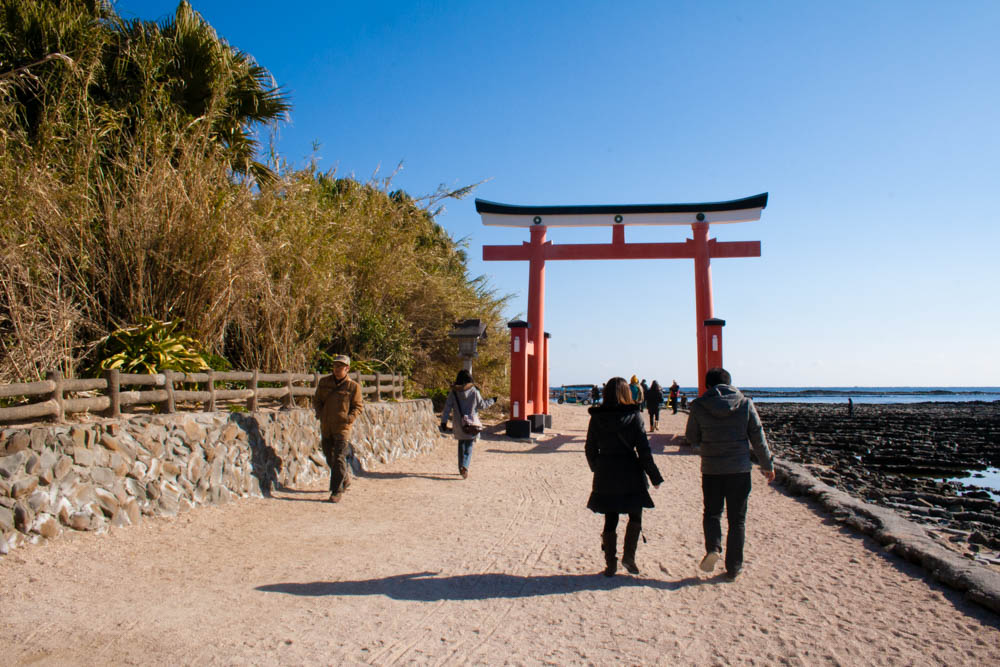
The surface area of the island is only about 4.4 ha and it’s a 1.5 km walk all the way around. The shrine is shielded by a subtropical forest that grows at the island’s center. It is believed to bring good fortune to married couples.
People also visit Aoshima to see “Ogre’s Washboard”(鬼の洗濯板), a group of wave-eroded rock formations that feature all along the Nichinan coastline. I remembered spotting them from the car on a trip down to Cape Toi.
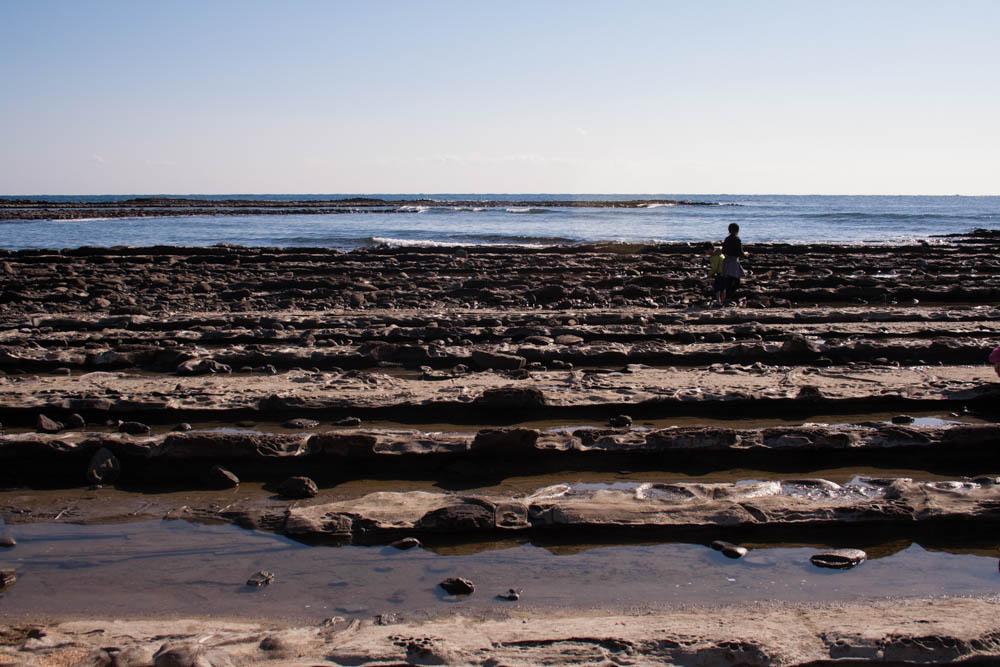
Before we parked, Mark and I had driven past a group of participants congregating outside a hotel. It was now a half hour later, and they would be running across the bridge soon. In the meantime, we were enjoying taiko drumming and a dance performance.
We were soon joined by a dancing Japanese lion, a New Year tradition intended to push away evil spirits and bring good fortune. When the lion saw us snapping pictures of him biting people on the head (a sign of good luck), he bounded towards us and insisted we be bitten as well. I leaned into his jaws reluctantly – I knew what was coming next – and a thousand camera shutters went off. I have never been more grateful to be wearing a hoodie, scarf and sunglasses all at once.
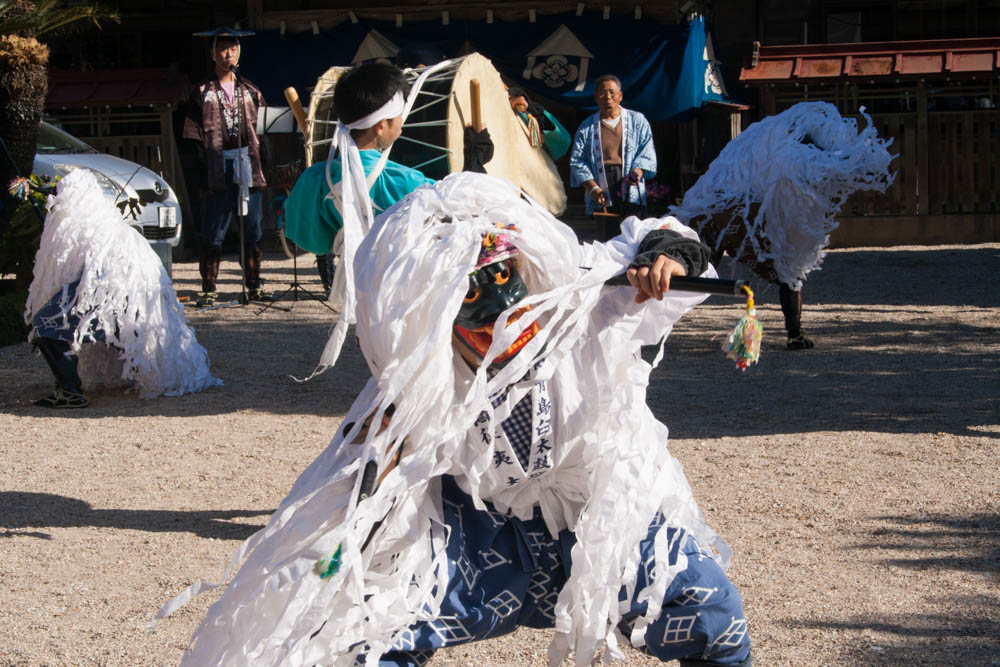
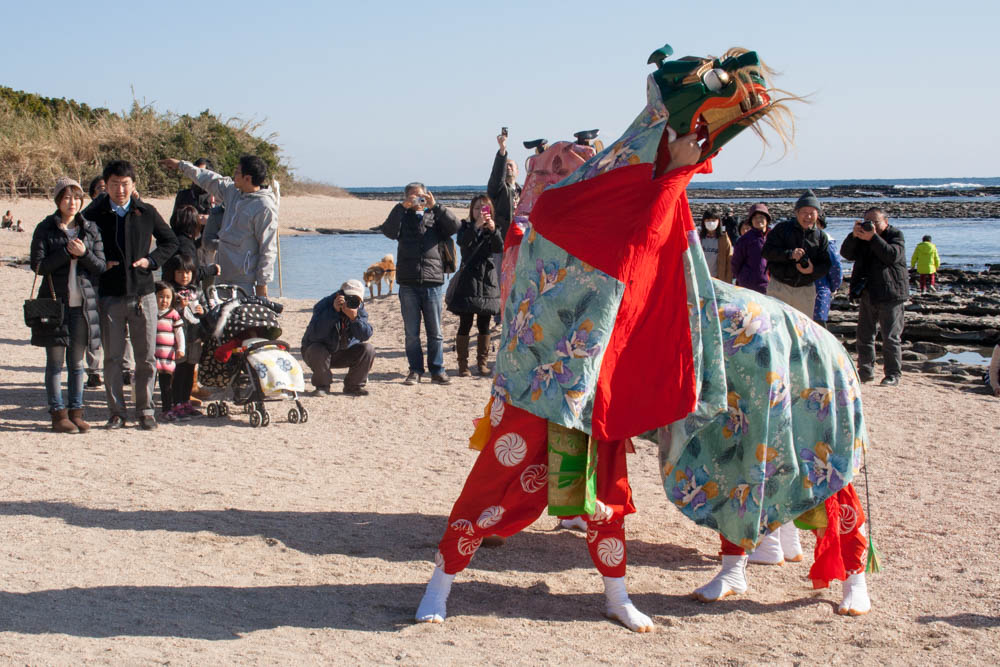
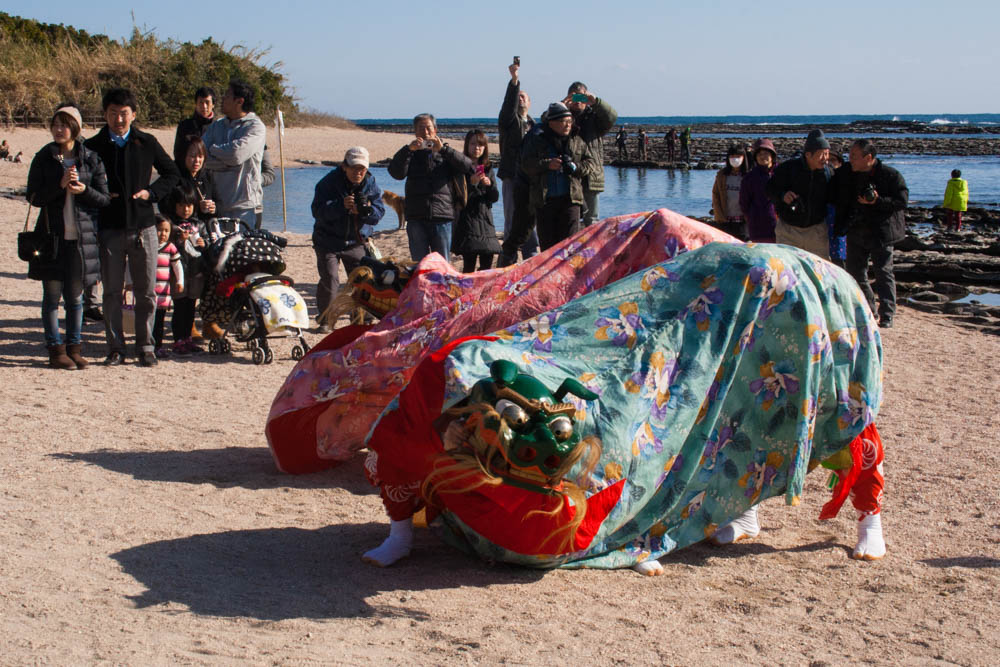
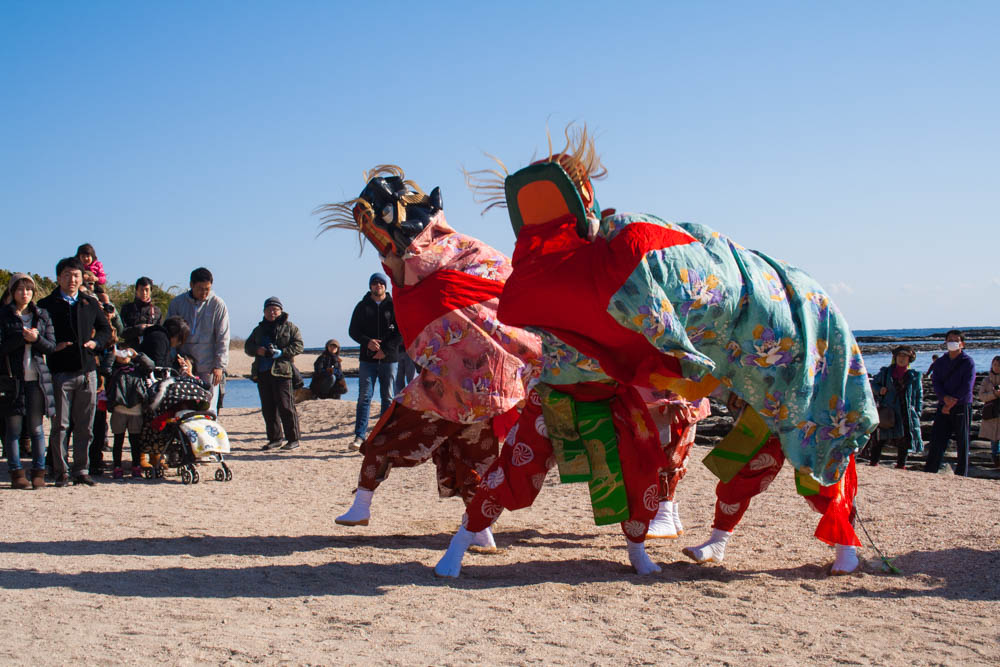
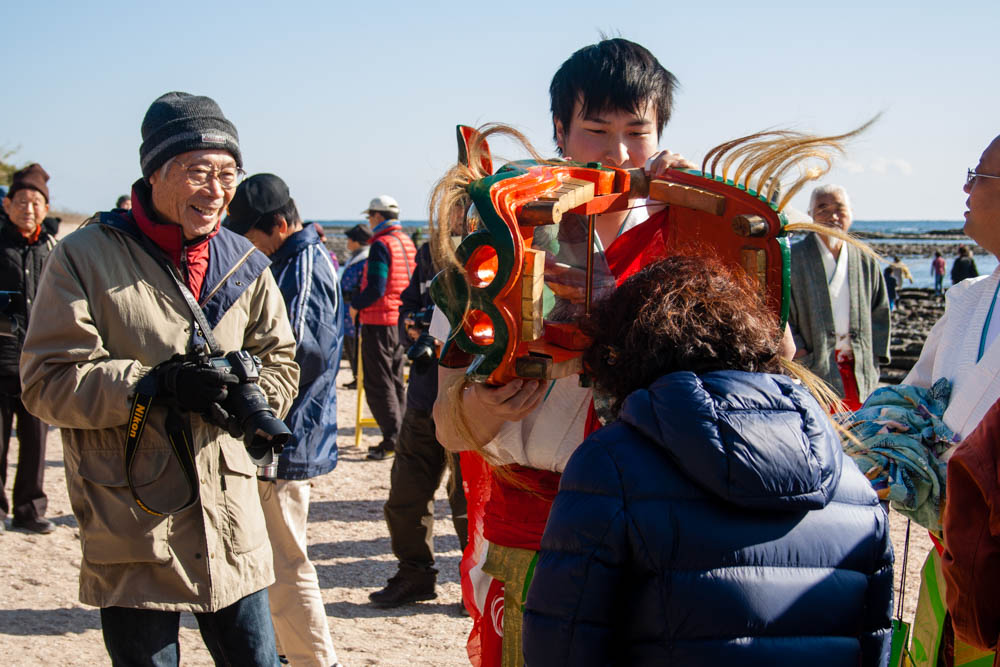
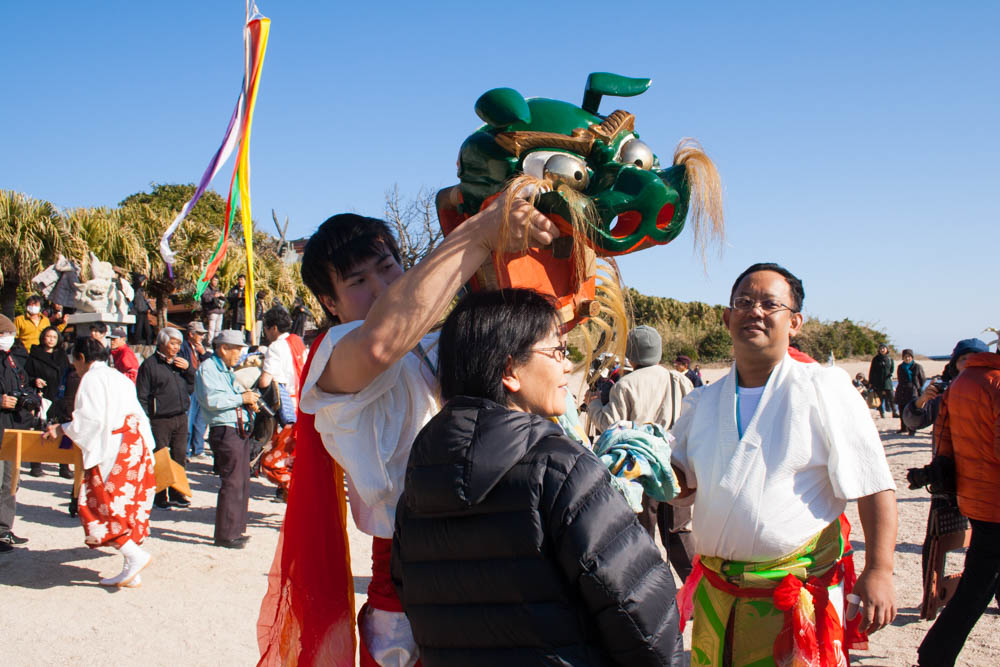
And then it was time; dozens of scantily-clad men, women and children came running past in a blur of skin and white cloth. The men wear only a fundoshi (loin cloth) and tabi (socks). The women wear a short happi (coat). Other than that, there’s only skin, hair and adrenaline to keep them warm.
The festival has its origins in a story about the god Yamasachi who, upon he returning from the Dragon Palace under the sea, was greeted by naked men off the shores of Aoshima.
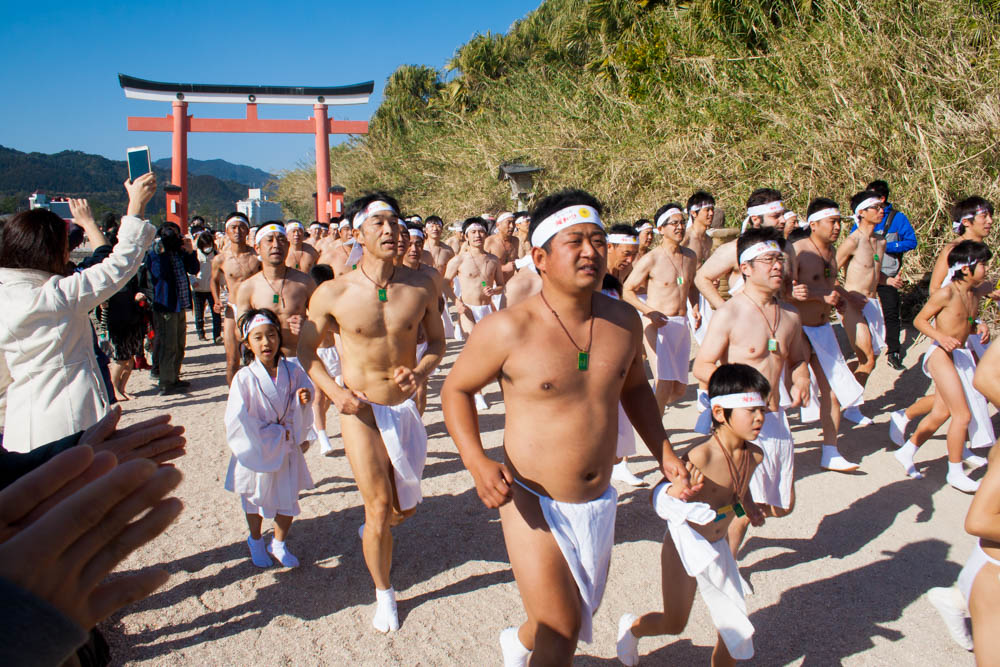
After all the participants gathered on the island, they were led into a short warm-up exercise. It kind of looked like what we do before big sporting events at school, with lots of bending and stretching going on.
Then it was time for us to run, across the Washboard to get a decent view of the beach where they would enter the sea. The group waded in, followed by plenty of shrieking. The whole thing was pretty exciting just to watch.
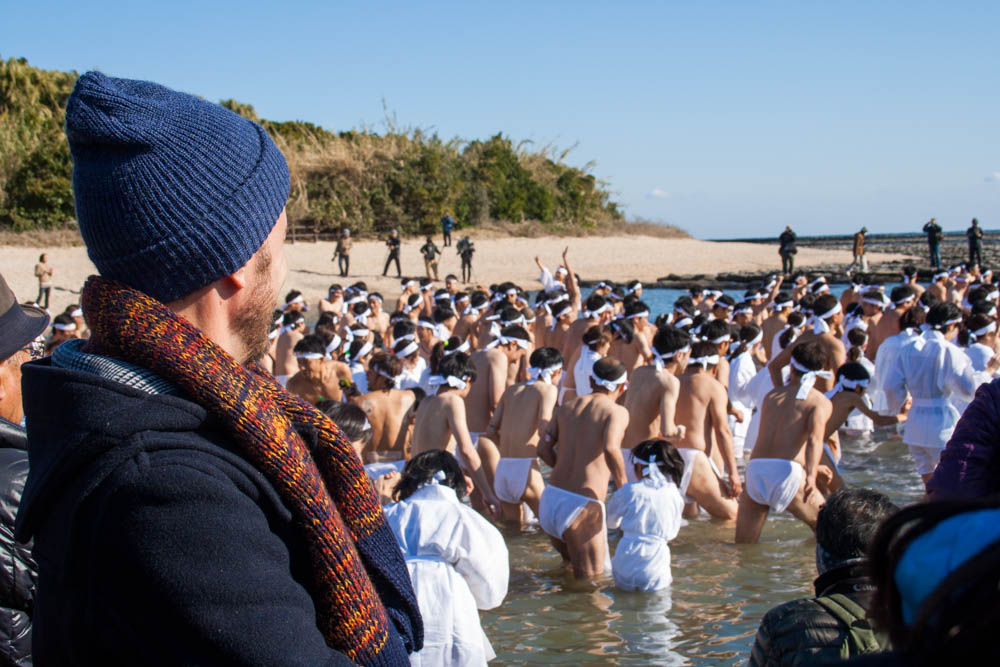
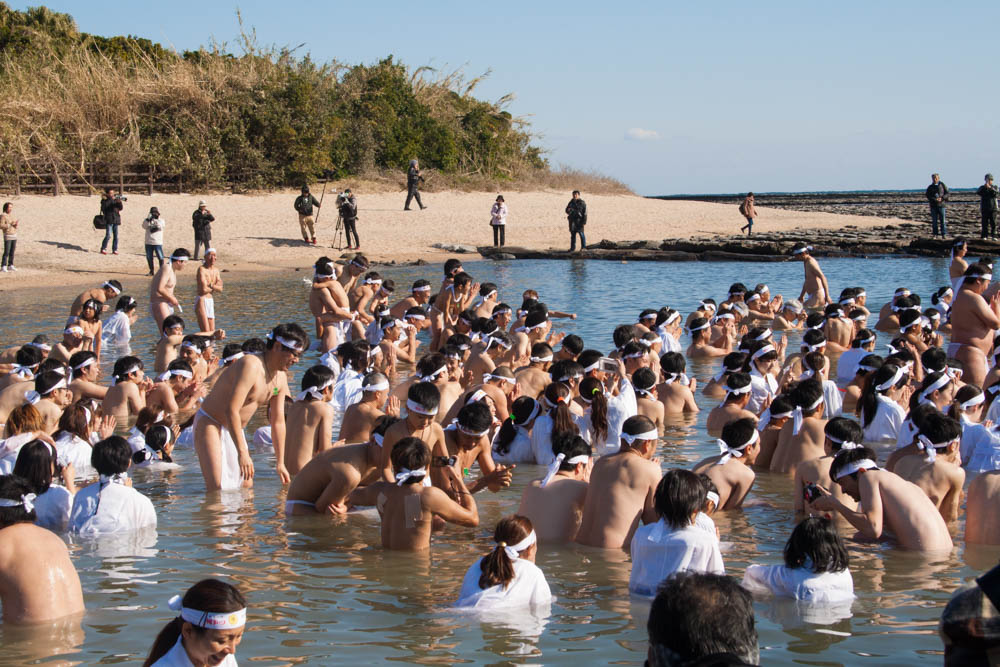
Gradually, the participants lowered their bodies into the water so that they were almost shoulder-deep. All in all, they were in for a good 10 minutes.
As I watched them wading back out onto the beach, I suddenly felt very small. I was in no rush to join in, but I admired their bravery. It must be one hell of a way to kick off the new year.
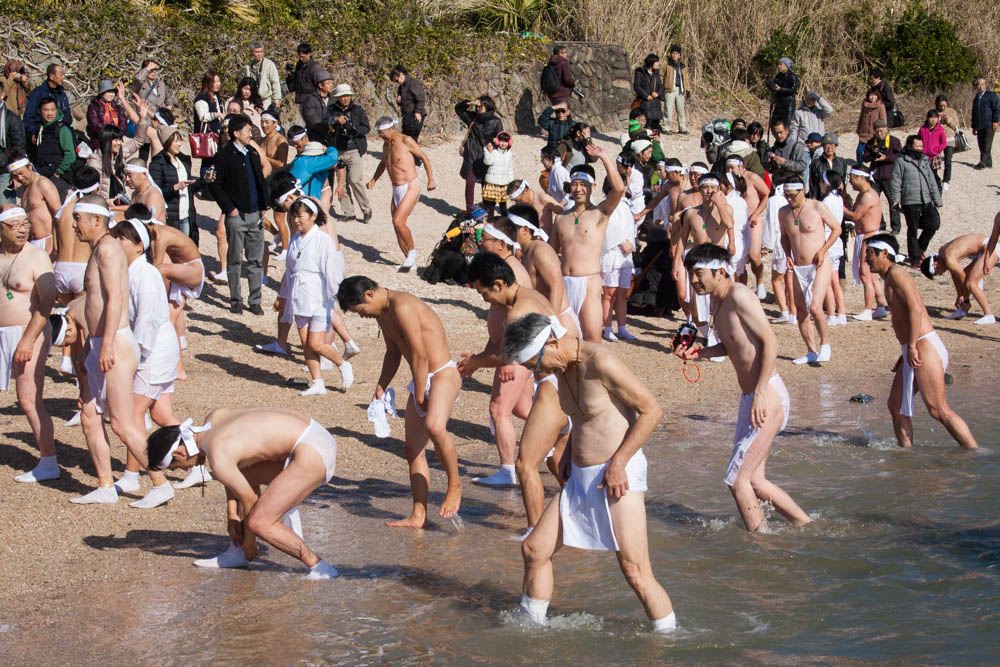
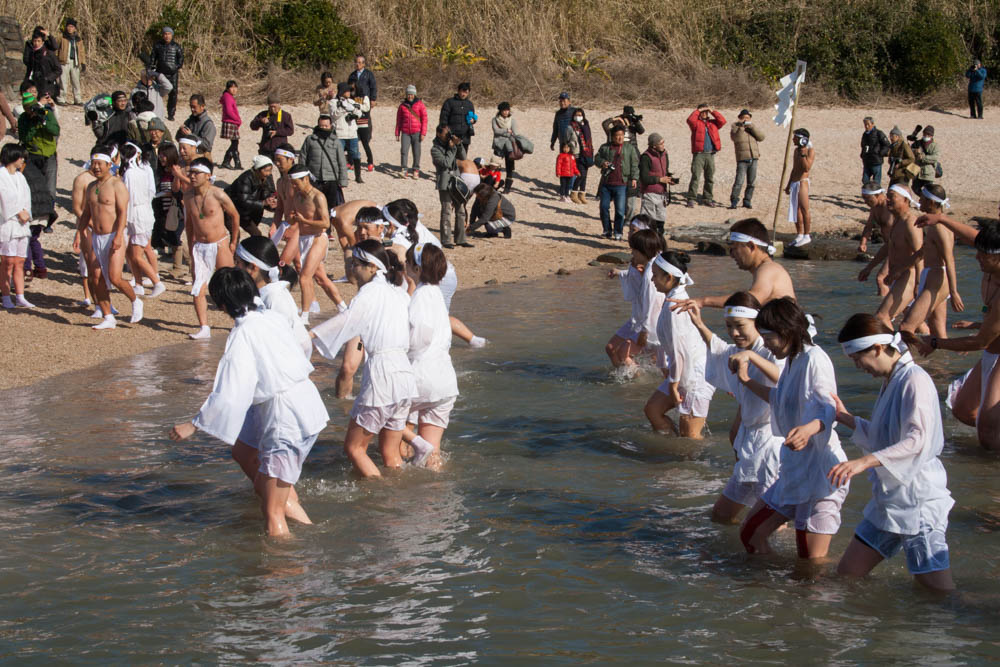
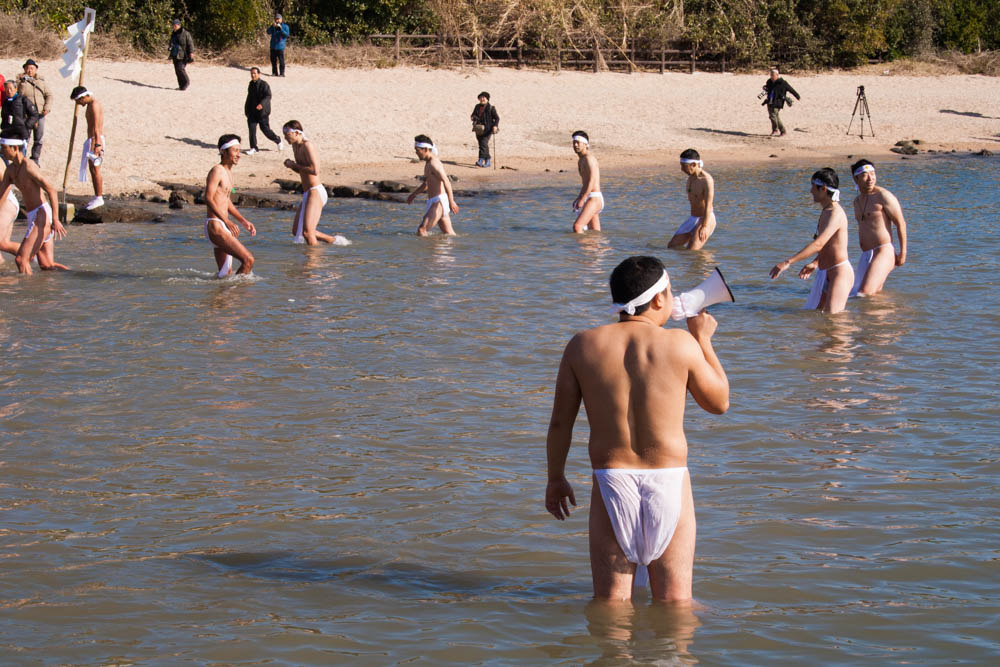
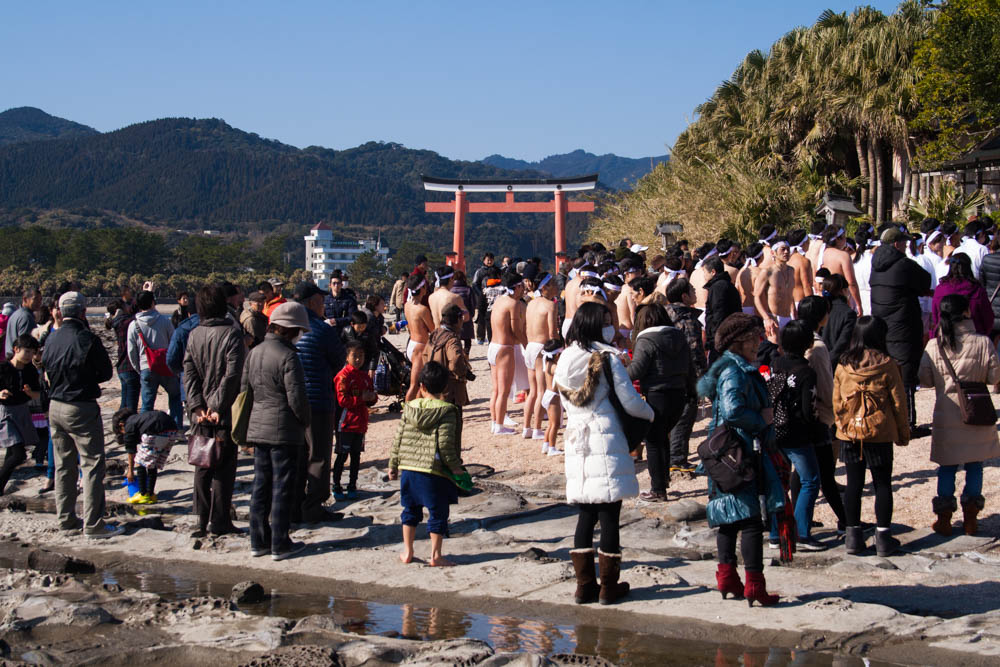
They disappeared into the shrine and Mark and I hung back, not sure what was happening. Another kind of ritual involving water took place, judging by the shrieks we heard and the dripping bodies that emerged soon after. They ran past us again, out of the shrine and, presumably, back across the bridge. If my body let me, I would have chased after them. But alas, the flu was winning.
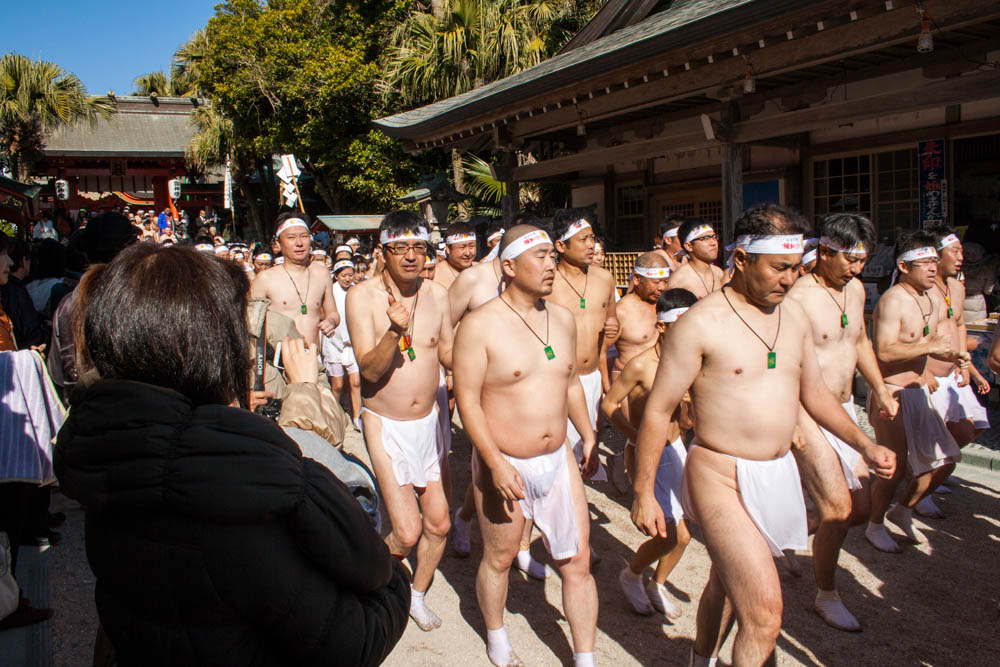
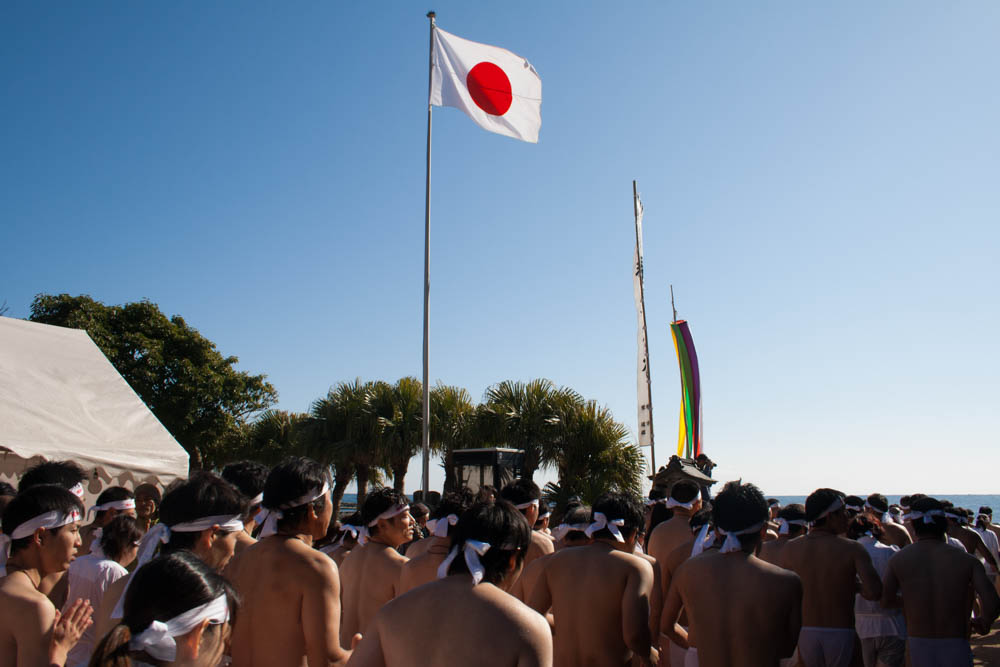
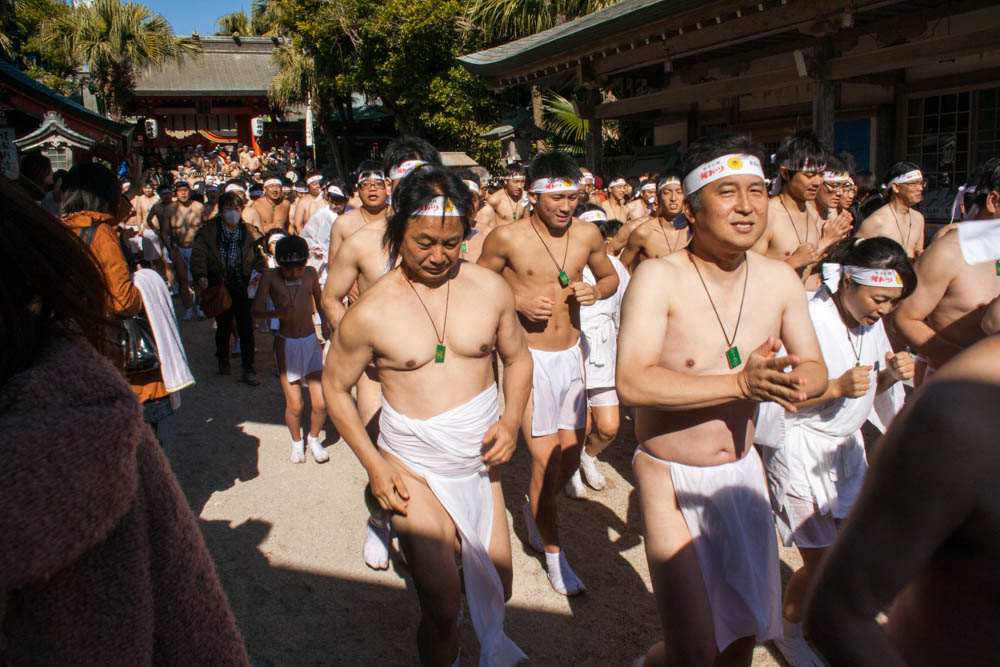
We explored the shrine after that, browsing for trinkets, inhaling incense and watching people receive blessing from the Shinto priest. Off to the right, an archway covered in blessings and wishes leads to a smaller shrine in the forest. Here, you can buy clay disks to throw at a target for luck. Mark landed his perfectly in the center. Mine flew off to the side and crashed into a tree. I told you the flu was nasty.

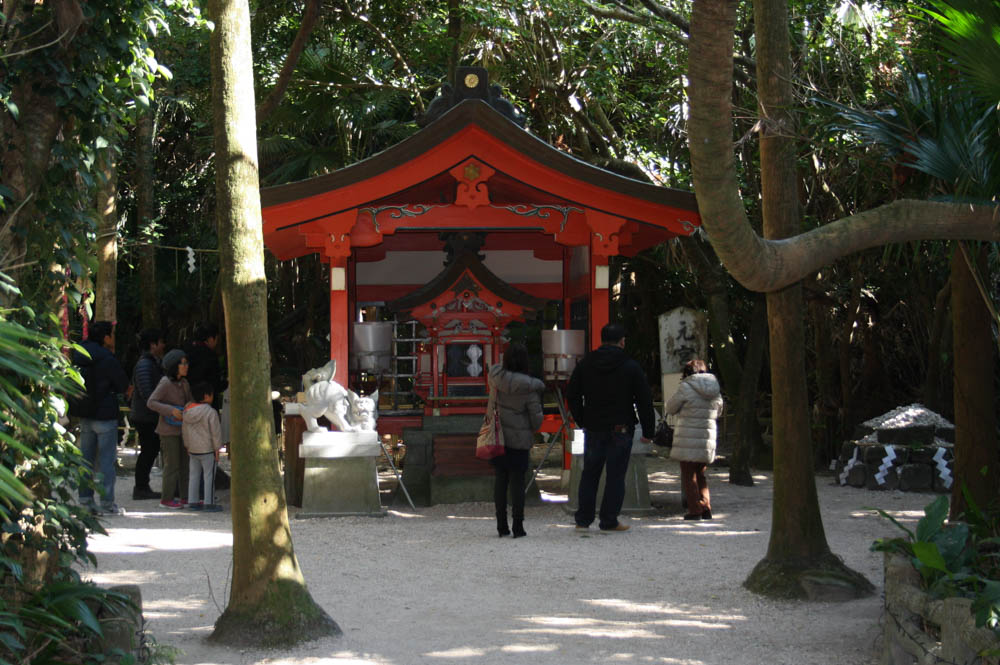
By the time we had crossed back over the bridge, it was lunchtime. We tucked into a little fish and chip shop for something to eat. I enjoyed the fact that it was called Strand Cafe – “Strand” in Afrikaans means “beach” – and that they had lemon-ginger tea on the menu.
The fish and chips were the best I’ve ever had in Japan. But the bottle of malt vinegar sitting on the table should have told me that when we sat down.
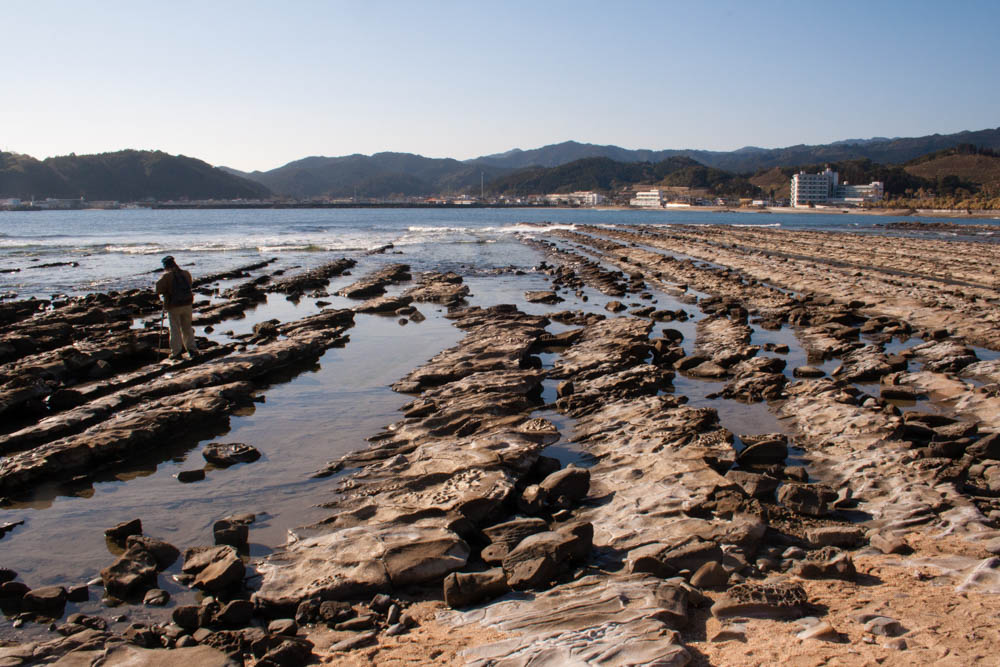









4 Comments
Join the discussion and tell us your opinion.
Very good article
Glad you enjoyed it 🙂
Some really great pics lady and such an interesting piece ^^
Thanks Nadia! It was an interesting festival…to say the least 😉